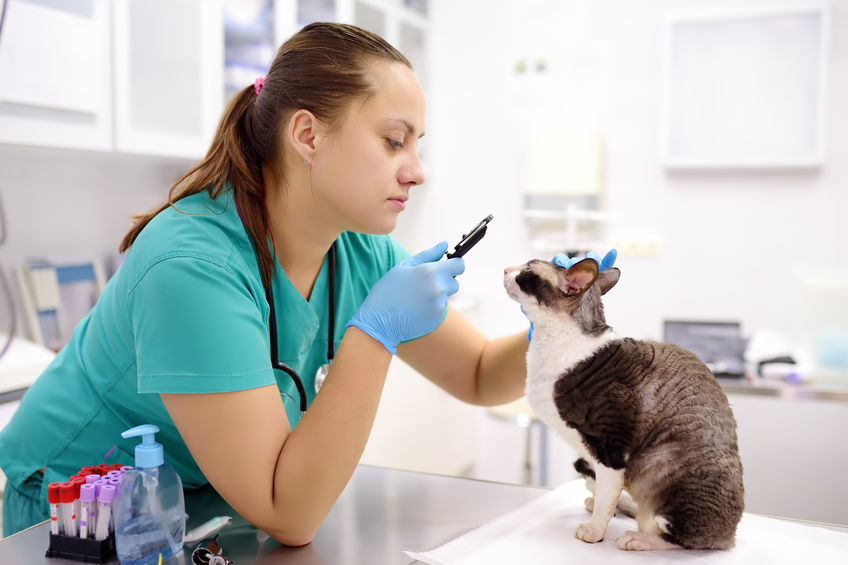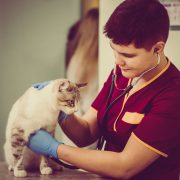Ocular fundus abnormalities in cats affected by systemic hypertension: Prevalence, characterization, and outcome of treatment
Ocular fundus abnormalities in cats affected by systemic hypertension: Prevalence, characterization, and outcome of treatment

Requires membership/payment
This article can be accessed via RCVS Knowledge Library Membership (click here).
In our edition of: Apr 2021
In our categories of: small animals
our summary:
Cirla, A. et al (2021) Ocular fundus abnormalities in cats affected by systemic hypertension: prevalence, characterization, and outcome of treatment. Veterinary Ophthalmology. 24 (2) pp. 185-194.
The aims of this prospective study were to determine the prevalence of ocular fundus abnormalities in cats with a diagnosis of systematic hypertension (SHP), to categorise the abnormalities using scores from 0-4, and to evaluate the ophthalmoscopic evolution during treatment with amlodipine besylate.
The study, which was carried out at two universities in Italy over a two-year period, included cats with a confirmed diagnosis of SHP. Before treatment, each cat was given a complete ophthalmic examination to assess the severity of their ocular fundus abnormalities secondary to SHP, and images were recorded with a digital fundus camera. Fundus abnormalities were classified with a score 0-4 (0 = no abnormalities, 4 = severe abnormalities). All cats were treated once per day with amlodipine besylate (Amodip, 0.625–1.25 per cat). Cases were re-examined for up to one year after diagnosis with follow-up visits scheduled on days 7, 14, 21, 28, 45, 90, 180 and 365 days from the beginning of the treatment. Cats lost to follow-up were excluded from the study.
The study included 225 cats diagnosed with SHP of which 132 had fundus abnormalities: 28 cats (grade 1); 24 cats (grade 2); 48 cats (grade 3) and 32 cats (grade 4). A complete follow-up (365 days) was performed on 211 cats.
Results showed that at the 7-day follow-up of the 132 cats with fundus abnormalities, 117 had ophthalmoscopic fundus improvement, one cat had worsened, and 14 cats showed no changes. There was significant improvement in the fundus abnormalities for 66/132 cats at 21 days and 121/132 cats at the final 365 days follow-up visit. Based on visual assessments at 365 days, 71/132 cats showed unequivocal visual function, 31/132 uncertain visual function, and 30/132 cats were considered blind.
Limitations of the study are that there was no control group and that the cats presented different degrees of retinal detachment at the first ophthalmic examination before treatment, so it was not possible to know how long the retina had been detached.
This study provides some evidence that there is a high prevalence of ocular fundus abnormalities in SHP cats and that treatment of fundus abnormalities secondary to SHP gives a better prognosis for maintaining visual function.
The study includes excellent images that will help veterinary surgeons to assess ocular changes in hypertensive cats.
Image copyright attribute: Maria Sbytova
Join the discussion
We encourage discussion on all material highlighted in each edition of inFOCUS. Use the button below to join the conversation on Twitter and include your comment in the feed for this issue.





Leave a Reply
Want to join the discussion?Feel free to contribute!